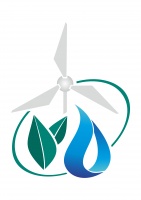Increasing water availability of pastures by constructing sardobas
| Title | Increasing water availability of pastures by constructing sardobas |
|---|---|
| Category of tools | System for enhancing water availability |
| Field of application |
|
| Usability of practice for adaptation to climate change | Moderate |
| Implemented by | Ministry of Nature Conservation of Turkmenistan |
| Used by |
Country: Turkmenistan |
| Local specifics |
17,238 ha of barkhan (sand dune), takyr (dry-type playa) and solonchak (moist-type playa) sites of the Kara Kum Desert; deep ground water occurrence |
| Practice usage period |
Start date: 01.01.2012 End date: 31.12.2016 |
| Problem solved through this practice |
Desertification and decreased productivity of desert pastures due to over-grazing around existing cattle watering sites |
| Tools used in the practice |
Technology of building sardobas (stone-dome covered water collection and storage reservoirs) to enhance pasture water supply |
| Description of the practice and its results |
Main actions:
Actions:
Results:
|
| Lessons learnt and recommendations made |
Lessons learnt: Construction of sardobas in takyr areas allows enhancing pasture water supply, thus, leading to the restoration of over-grazed pastures. Recommendations: The practice requires long-term planning and an integrated response with the early-on engagement of desertification experts (designing a set of measures to protect takyrs from sand drifts), state agencies (technical assistance) and pasture users (observance of pasture rotation schemes, prevention of takyrs from contamination and pollution). |
| Source of practice |
Traditional tools transferred from generation to generation that proved their efficiency in modern conditions |
| Readiness for implementation |
1. Cost of implementation: Low 2. Approximate cost of investment per 1 ha: $1,000-5,000 3. O&M costs: Low 4. Expert support: Needed at implementation stage |
| Brief information on the project |
Project title: Responding to climate change risks for dekhan farming system of Turkmenistan on national and local levels. Project duration: 2012-2016. Project goal and objectives: build the adaptation capacity to respond to climate change impacts, including variability on local and national levels. Project beneficiaries: Bori Settlement (over 1,100 people) and Bo-Kurdak Settlement (about 4,500 people). Project implementer: Ministry of Nature Conservation and UNDP |
| Funding source | Government of Turkmenistan, Adaptation Facility |
| Information sources | |
| Form submission date | 04.04.2018 |
| Print Compare with other practice |




